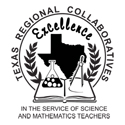Beginning in the 2011-12 project year, the TRC began piloting a new design for school level intervention called the Immersion Model. In an immersion school, every teacher at a specified grade level must receive TRC training. As such, when campus level standardized test scores are used to examine the relationship between TRC training and student achievement, a valid inference can be made that all teachers who impacted student scores that year had received TRC training. For the 2012-13 project year, every Regional Collaborative is required to identify a minimum of five immersion campuses for whom they will provide professional development services.
TRC Immersion Model Overview
To achieve an Immersion Model, TRC training must meet the following requirements:

A minimum of 5 campuses with the same targeted grade level or subject for which a STAAR test is administered.
Each campus must have:
- At least one Teacher Mentor (STM or MTM) at the targeted grade level trained by the Regional Collaborative
- Cadre Members (CMs) at the targeted level who must earn on average 24 contact hours of Professional Development from a Regional Collaborative. (If only one teacher is assigned to the immersion grade level, a campus may not have any immersion CMs)
There are two distinct advantages to the immersion model. First, research has shown that whole-school professional development models are more effective for systemic, long-lasting change, and have a more positive impact on student learning. Providing a coherent program of professional development for an entire grade level, as described in the immersion model, is a good step in this direction. The second advantage is related to program evaluation. One of the greatest challenges for a Regional Collaborative (RC) is designing a plan that adequately measures the impact of professional development on student achievement in a meaningful way. Ideally, Regional Collaboratives would measure student achievement at the teacher level. However, accessing student data clustered by teacher is extremely difficult given the current design of the Texas student data collection system. To deal with this challenge, Regional Collaboratives are strongly encouraged to utilize an immersion model that provides professional development to all teachers at a campus at a specific tested grade level for the purpose of collecting campus level STAAR data. While the TRC and sponsoring agencies benefit from receiving a rich data set for further analysis, students can benefit from this model as well.
In the immersion model, projects must recruit a team of Mentors and CMs that represent all teachers on a campus at a tested grade level/subject for the purpose of collecting campus level STAAR data. Identifying a specific tested grade level to target, and offering a full immersion program for staff members that teach at this grade level on multiple campuses, will facilitate a more valid mechanism for determining the impact of the program on student achievement at the campus rather than teacher level.





